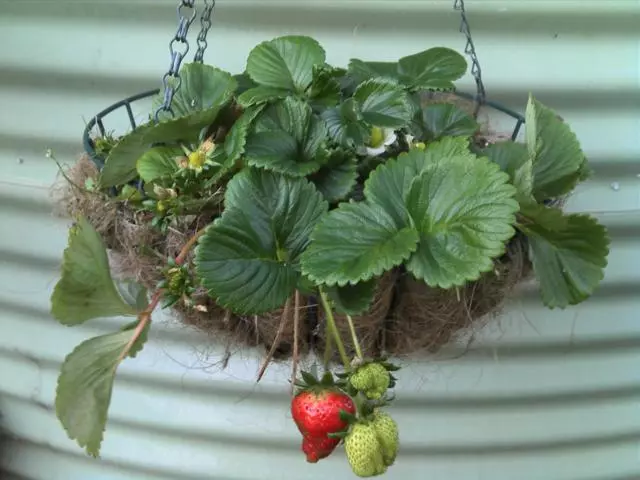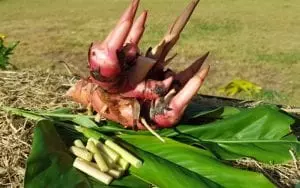Have you ever purchased a fresh vegetable or fruit from the supermarket or green grocer only to find once you bite-in the taste doesn't live up to your expectations? Well, you're not alone (not surprisingly because ever is a rather large window), but also, it seems the trend in tasteless vegetables and fruit is becoming prevalent particularly in the major supermarket chains and there are reasons why blandness is the new era of retail fruit and veg.

Real reasons for tasting different
But let's begin with some legitimate reasons to why same fruits taste different. For a start, growing fruits and vegetables in different regions, or by moderately different methods, or in slightly different soils can produce subtle and sometimes outstanding differences in taste. However, these taste differences are not always noticeable or even concerning to the consumer. Also, these taste differences are a little harder to define in vegetables rather than fruit.
With fruit mainly in mind, for now, you may have noticed differences in sweetness from season to season in certain varieties, or, the texture, appearance, and size of fruit might have been marginally different to a similar variety bought from different grocers. For the most part, these deviations are quite normal and give fruit, in particular, that great lure of expecting and then gratifying those taste buds with something even better albeit a little different then last time you ate one. Good fruit isn't just judged on its sweetness and tartness alone when it comes to taste but more on its balance of flavour giving varieties there unique savour. Freshness is important too and self-explanatory; but, most fruit grown in different regions with slightly different methods don't vary in taste so much to concern anyone, and then, there are some fruits that do.
Growing grapes and taste…
Think about growing grapes as an analogy. Wine makers and connoisseurs have known for centuries about how growing grapes in different regions or even different vine yards within the same region can produce vastly differing tastes. Although the grape may be the same type, the method of growing and wine production similar, why does taste differ from vine yard to vine yard? The answer is really simple – just like all fruits grapes obtain there unique flavour through genetics; soil; what the plant consumes or is fed ( minerals, water, trace elements etc); and climatic conditions during the growing period.
Thus, two exact grape vines grown on different plots can produce slightly or vastly different tasting fruits because the plants are accessing different nutrients naturally through difference in soils, and artificially through fertilisers. The climatic conditions also play a part during the season and can alter fruits sugar concentration, bitterness, and so on. Furthermore, because of the refining process in making wine these differences in taste (even if subtle) are amplified on the palate. Wine connoisseurs as we know are rather picky when it comes to variations in taste; in contrast, fruit eaters (even grape eaters) are more forgiving.
Wine production and grape growing is very interesting and connoisseurs have kept the industry honest and the standards largely high but have other fruit producing industries followed the same standards? Or, have they excelled in market strategies to get the most buck for yield, and the most yield on the supermarket shelf looking as pretty as possible at the expense of taste? I think some producers have forgone taste for higher returns and this is concerning but not always their fault alone.
Producers, are they to blame?
Producers have to make a living too and these days with the cost of living getting out of control so is the cost of production. There are pressures placed on producers like ridiculously fast rising utility costs, competition, unrealistic expectations from major food retailers and the public, weather conditions and climate change. All these pressures place a huge burden on producers to find ways to cut costs and grow fruits and vegetables best suited for getting to the supermarket shelf in bulk, unblemished, at the least expense, and as fast as possible. Sadly, the taste of some fruits have become the least important factor (excluding the wine industry) behind presentation, preservation, and economy of effort. And, the consumer (us) are partly to blame due to our neurotic insistence on only selecting picture-perfect, flawless fruit from the supermarket shelf.
Dinner-party – Strawberries no flavour
Recently, I attended a dinner party and the hosts presented a beautiful three course meal using fresh, in-season ingredients both purchased and home-grown. Over the dinner table we got to discussing home grown vegetables and fruit and the taste and health benefits etc. I was asked this question about strawberries, “why is it that strawberries don't taste the way they used to; lately, the strawberries we buy seem to have little flavour?” Now, the person who asked me this question happens to be a wine connoisseur (a much better one then I) and he understands how different wines derived from the same grape can vary in taste. However, he was perplexed as to why the strawberries actually lacked taste. If the connection to tasteless strawberries isn't obvious to the wine connoisseur then average Joe Blow has little chance.
Factors affecting taste
To answer his question on strawberries let's look at four key factors: varieties genetically modified or cross-bred, fertiliser and feeding, pesticides and other chemicals, and transportation. Apart from what was stated earlier about weather and climatic conditions, the type of soil or medium the fruit plant/tree is grown etc, these other key factors largely contribute in negatively affecting the taste of our most common fruits and these are mainly directly and deliberately influenced by the producer. By looking at these key factors a little closer we can see why:
-
Varieties genetically modified or cross bred – Technology has played a major part in the taste of commercial produce, mostly detrimentally. Historically, keen gardeners and horticulturists cross bred varieties of fruit and vegetables mostly as a quest for a superior tasting product. Sure, disease resistance and hardiness were desirable too but not if the taste was inferior. Heirloom varieties of fruit and vegetables have been developed and passed down through generations and are still the best option for the home gardener today. Regrettably, modern methods be it genetically modifying or cross breeding have been focused on durability of the plant and fruit, productivity, and uniformity of size and ripening (so mass harvesting can be undertaken) rather than taste. Thus, industries have developed some incredible, great looking varieties withstanding, drought, rain, cold, heat, pests, disease, all of which grow uniformly and ripen at the same time with clockwork predictability. The only problem with many of these varieties is taste (just a small issue hey).
-
Fertiliser and feeding – Like things done slow? A slow cook steak or meal, matured cheeses and salamis, and aged wine are some examples of how time can improve the end product and it's the same with most fruit. Fruit grown too quickly can lack a mature taste. Over feeding plants and a constant access to irrigation (especially irrigation containing rich nutrients) does make fruits and vegetables grow rather quickly; so fast, they lack depth of flavour and are more water than flesh. Many fruits taste better when slightly deprived of water just prior to ripening allowing the sugars to concentrate a little before picking. Some vegetables are an exception though, particularly leafy ones like lettuce and rocket, which are better grown fast and that's probably because these vegetables have evolved as fast growers anyhow. Nevertheless, most fruits and vegetables don't need to be hurried up to an extent of all water no substance.
-
Pesticides and other chemicals – If you have ever smelt the petroleum based scent of systemic pesticides you'd know what I mean when I say usage (particularly overuse) of these chemicals on fruit and vegetables can't be good for taste. No one really knows for sure if these chemicals have dissipated fully by the time the food gets to our mouth or what affect spraying has on the taste of the final product. Yes, products are supposed to have withholding periods before market but these days who can trust this is being upheld and properly regulated? Going by recent performances of government agencies across the World shirking all sorts of responsibilities, my guess is a vast majority of produce reaches supermarket shelves untested for residue. To be safe, producers are likely to spray more chemicals over their crops rather then risk imperfect fruit and poor returns. The pressure on producers to grow a perfect looking specimen for the fluoro lit supermarket shelf must be enormous! In Australia, we have advertisements on prime-time TV from major food retailers coaching us to select only fruit with no blemishes, which feel full and heavy for size – I find those adds kind of patronising. Gardeners know that sometimes home grown fruit and vegetables can look ordinary due to natural imperfection, the odd insect bite, or slight fungal issue but they are chemical free and taste great. Like my mother always says about blemished fruit and vegetables, “ well you can just cut that little bit off and not worry about it.”
-
Transportation – Scientific testing have proven fruit and vegetables lose nutrients and vitamins between harvesting and consumption and the loss obviously increases with time. These days a great deal of fruit and vegetables are no longer grown locally for local consumption. To meet market demand most fruit and vegetables are endlessly “in season” and available to the consumer. Where this is an obvious advantage for the consumer, having a particular fruit available on any day of the year has hidden pitfalls. Unfortunately, fruit and vegetables can spend days or weeks being transported to get to destination. This means lots of bouncing around, handling, fluctuating temperatures, and depending on the quarantine laws in place and where the produce originated from goods may be subjected to more dipping (pest and disease control by use of chemicals) before reaching the shelf. To combat the rigours of transportation, some produce are picked unripe or green and because the produce is green it's harder and less likely to bruise or spoil before reaching the consumer. The problem with picking most fruit green and hard is taste. Again, most fruit and vegetables need as much time as possible to ripen on the plant naturally so vital nutrients and sugars can be taken-up and stored. Also, green fruit is often artificially ripened for presenting to market in a timely manner; this is done by the use of a gas called ethane. Ethane may or may not be harmful to humans when used to ripen fruit, however, for industrial purposes ethane is produced in large quantities chemically and is also used to manufacture other products like plastic and some detergents. Certainly, ripening fruit with ethane is not natural. Some exceptions to ripening on the plant do come to mind, avocados for instance are picked hard and only ripen off the plant, however, these exceptions are few. Ironically, some fruits and vegetables are grown in locations for convenience in transporting the produce to markets not necessarily for the quality of the produce itself. That is, the producers persevere in growing produce not suited to the climate because the location saves on transportation costs. Consequently, produce grown in locations not ideally suited to the plant are subjected to more pesticide and fungicide spraying just to keep the produce viable for the market. Most would agree this method of cost saving on transportation can't be a positive for healthy eating.
Overall, those four key factors in my opinion are shaping the taste of our fruit and vegetables today. It isn't hard to understand why the strawberries in my story example had little taste, because, they were meant to be that way. Through selection, growing, processing and transporting the strawberry once full of flavour is now a big, shiny, voluptuous, watery, disappointing fraud of what it should taste like.
Regain flavoursome fruit
So how do we combat tasteless fruit and vegetables purchased from retailers? Don't reward bad practise by buying poor tasting produce would send a good message. Or, insist on tasting a sample of the produce before committing to buying. You could seek a local market (usually weekender’s) whom you can trust will sell you in-season, local produce grown with care. We have local markets every Sunday in Caboolture; and although they're a little rough around the edges, the produce is excellent and sold by the grower face-to-face. Try growing your own fruit and vegetables to supplement what you buy and recover those lost taste-buds from your youth. If you're young (lucky you) and have never tasted home-grown before, take up my challenge to grow and taste a real tomato other then the chewy, rubber slice hidden in your favourite McDonald's burger – I promise you real tomato makes the burger taste better (no plagiarism intended). See, home grown produce are grown with love and time not picked green, gas ripened, are days or sometimes months old, dipped in pesticides and fungicides, or selected for the shelf not the eating.
Try other varieties
If you haven't yet tried growing some vegetables and fruit at home you are limiting your taste and diet by what others dictate. There are hundreds and in some cases thousands of different varieties of fruit and vegetables besides the generic found in the major chains. All of these varieties have differences in taste that I commend you to explore. These varieties are not commercially viable to be grown for the large supermarket chains but are perfect to grow on a small scale in the home or community garden.
So next time you sip on your favourite Chardonnay summoning the wine connoisseur within, contemplate the fine taste of other fruits and how our attention to these other foods can help improve the fruit and vegetable market as well. And remember, there are no substitutes for food grown in the back yard, a communal park or wherever the plot may be because if nurtured all things grow better…even humans.
Look, and see the Earth through her eyes
Mark – Editor SSM













